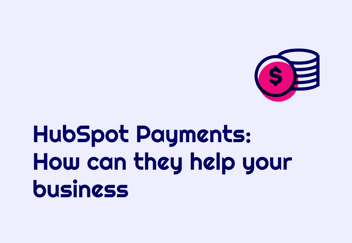HubSpot vs Keap: A Comprehensive Comparison
As marketing automation and CRM platforms, HubSpot and Keap have been the go-to tools for many...
As marketing automation and CRM platforms, HubSpot and Keap have been the go-to tools for many businesses around the globe. Both of these platforms offer a suite of tools designed to assist businesses in automating their marketing processes, managing customer relationships, and growing their sales. While they both offer similar services, they each have their unique strengths and weaknesses. In this blog post, we will dig into these platforms and provide a comprehensive comparison to help you decide which is the right fit for your business.
Overview
HubSpot
Founded in 2006, HubSpot has grown into one of the most widely recognized brands in the marketing software industry. The platform offers a complete stack of software for marketing, sales, customer service, and CRM, all powered by a unified database. It is famous for its inbound marketing approach and is favored by businesses of all sizes for its user-friendly interface, extensive features, and top-notch customer support.
Keap
Formerly known as Infusionsoft, Keap has been around since 2001 and has been primarily designed for small businesses. They offer robust CRM, sales, and marketing automation features along with e-commerce functionalities. Keap has been known for its powerful marketing automation workflows and is favored by businesses that require complex automation features.
Pricing
HubSpot
HubSpot follows a tiered pricing model, which starts with a free version for its CRM and a few marketing tools. As for its paid tiers, they start at $45/month for the Starter plan, $800/month for the Professional plan, and $3,200/month for the Enterprise plan.
Keap
Keap, on the other hand, offers three pricing tiers: Keap Grow at $79/month, Keap Pro at $149/month, and Infusionsoft at $199/month. There's also a one-time onboarding fee that can range from $99 to $999, depending on the plan you choose.
Features
HubSpot
HubSpot is renowned for its extensive suite of tools. Here are some notable features:
-
CRM: HubSpot’s CRM is designed to be easy to use with a clean, intuitive interface. It offers detailed contact and company records and full integration with their marketing, sales, and service tools.
-
Marketing Automation: HubSpot’s marketing automation is powerful yet easy to set up. It includes a visual workflow builder, where you can design complex automation workflows.
-
Content Creation & SEO: HubSpot provides tools for content creation, like blogging and social media, along with SEO recommendations to increase organic traffic.
-
Sales Hub: It includes features like email scheduling, meeting scheduling, sales analytics, and more.
Keap
Keap also offers a robust suite of tools, including:
-
CRM: Keap’s CRM is robust and highly customizable. It offers detailed contact records and task automation.
-
Marketing Automation: Keap provides one of the most powerful marketing automation tools in the market. It includes a campaign builder that allows for complex automation workflows.
-
E-commerce: Keap's platform includes built-in e-commerce features such as shopping carts, order forms, and payment processing.
-
Sales Pipeline: Keap includes a visual sales pipeline, which makes managing deals simple and straightforward.
Integration
Both HubSpot and Keap provide a good range of integration options with other platforms. However, HubSpot has an edge with over 500+ integrations including major ones like Google Workspace, Salesforce, Slack, and Shopify. Keap, while not as extensive as HubSpot, also offers important integrations including Zapier, QuickBooks, and WordPress.
Ease of Use
HubSpot is widely recognized for its user-friendly interface. Everything is neatly organized and the learning curve is not steep, making it a great option for beginners and non-tech savvy users. Keap, while powerful, has a steeper learning curve due to its complex nature, especially with its marketing automation tool.
Customer Support
Both platforms offer a variety of customer support options. HubSpot provides phone, email, and live chat support, in addition to a wide range of educational resources like webinars, guides, and a dedicated Academy. Keap offers phone and chat support along with a vast library of articles, videos, and webinars.
Final Verdict
HubSpot and Keap are both powerful platforms but cater to different business needs. HubSpot, with its intuitive interface and comprehensive feature set, is an excellent all-in-one platform for businesses of all sizes. If you need a user-friendly platform with a focus on inbound marketing and sales, HubSpot could be the way to go.
Keap, on the other hand, shines in areas like advanced marketing automation and e-commerce functionalities. It is a powerful tool for small businesses needing high-level automation and sales features. But remember, it does come with a steeper learning curve.
Before making a decision, consider your business size, needs, budget, and the complexity of the marketing and sales processes you need to automate. And remember, both platforms offer free trials or demos, so take advantage of those before making your final decision.
Your ultimate guide to strategic outsourcing
Subscribe for expert tips, trends, and tailored solutions.




